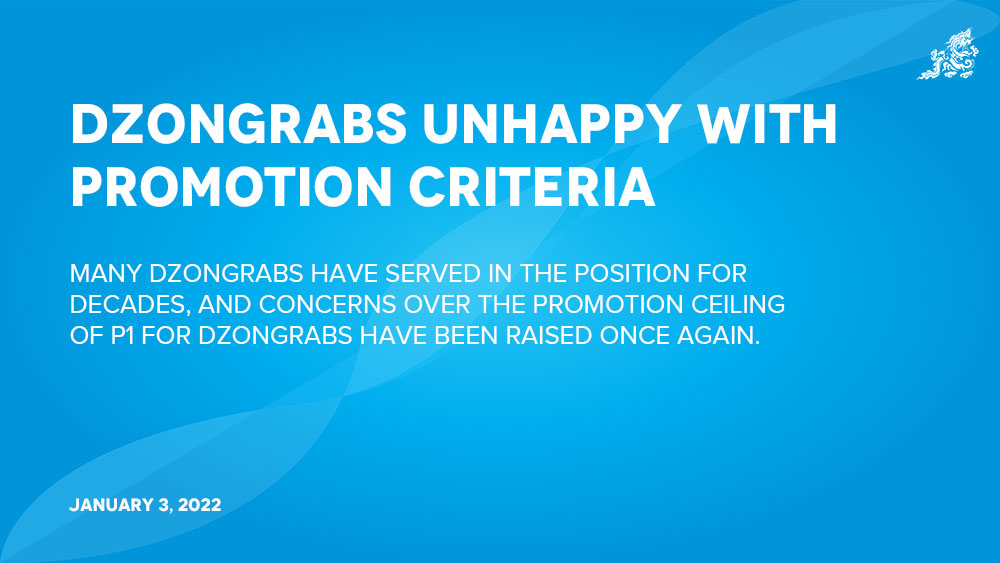Phurpa Lhamo
Many dzongrabs have served in the position for decades, and concerns over the promotion ceiling of P1 for dzongrabs have been raised once again.
In 2015, the Royal Civil Service Commission (RCSC) decided that the candidates for the dzongdag position would be nominated by the RCSC from the director level (EX3) and not from the division heads at the P1 level.
An RCSC official said that the appointment of dzongrab was done at P2 with their promotion to P1 as the normal promotion.
“All other promotions to P1 management positions are through an open competitive selection process only.”
Further, it was decided that the position level for dzongdag would be executive position categories EX2 and EX1. Earlier, the positions were EX3 and EX2 categories.
A dzongrab said that when the reform was introduced, concerns were raised by dzongrabs across Bhutan.
He added that dzongrabs have constantly raised this issue with ministers during their visits to the dzongkhags. “The government knows about these issues. Dzongrabs have raised these issues to the lyonpos several times but there has been no change.”
Gasa’s senior dzongrab, Dorji Gyeltshen, said that to become a dzongdag, those at the P1 level had to take part in open competition for a directorial position in ministries.
He added that this was usually not practical, as most of the vacant director positions are filled by someone who has been working in the ministry at the P1 level.
Dzongrab Dorji Gyeltshen has been a dzongrab since 2010.
According to the RCSC official, dzongrab positions were critical, as they are second in command in the dzongkhags, and because once in P1 management, the dzongrabs were a critical pool for executive positions.
“Hence, in order to do quality checks on those already appointed at P2, their promotion to P1 was reviewed and approved by Commission and the appointment of dzongrab was elevated to P1 and exceptions were only given to those positions wherein, there weren’t any takers.”
However, dzongrabs claim that this barrier in promotion has discouraged many to become a dzongrab.
Another dzongrab, who has been serving for about nine years, said that one of the dzongrabs had been in the position for about 17 years. “We don’t have any option. In the past, many would become dzongdag after being a dzongrab.”
Some of the responsibilities of dzongrabs include initiating the formation of sectorial plans and coordinates compilation of the dzongkhag plan for further consideration by the dzongdags; coordinating dzongkhag yargay tshogchung (DYT) in the capacity of its secretary; engaging as the chairman of the dzongkhag tender committee and processing procurements; discharging the administrative and financial responsibilities and capacity of the drawing and disbursing of officer; coordinating and supervising all socio-cultural activities in the dzongkhag; and liaising and maintaining public relations with different agencies, in the context of implementing the dzongkhag policies and plans.
A dzongrab said that the responsibilities of the dzongrabs were parallel with that of the dzongdags.
Another dzongrab said that often, most responsibilities are executed by the dzongrab. “Putting a ceiling on the dzongrab position at P1 could also affect the management, as there are many sector heads in P1.”
Dzongrabs also pointed out that most dzongdags who come through ministries do not have the required experience and knowledge for the dzongdag position.
Currently, there are 21 dzongrabs in office.


